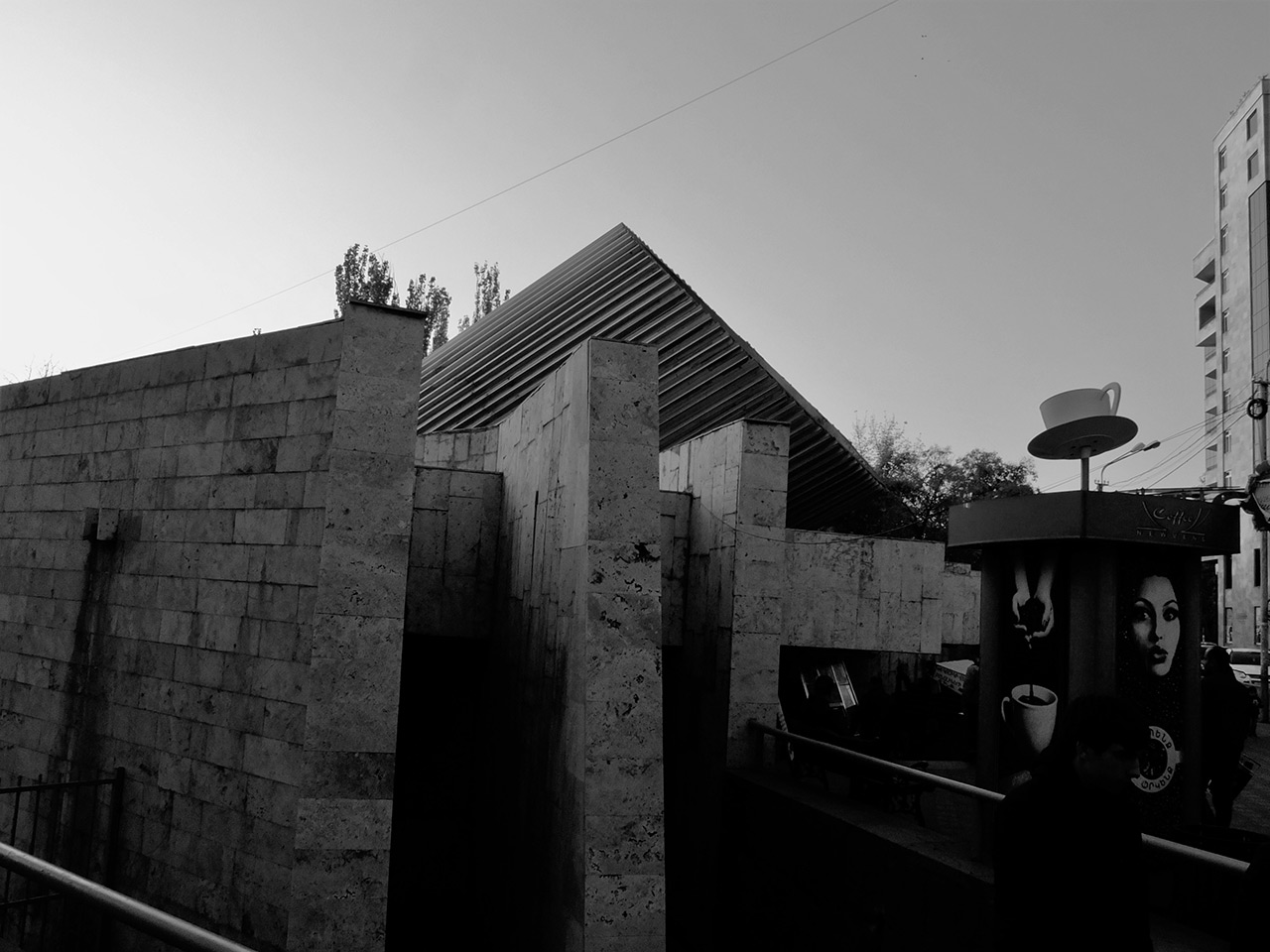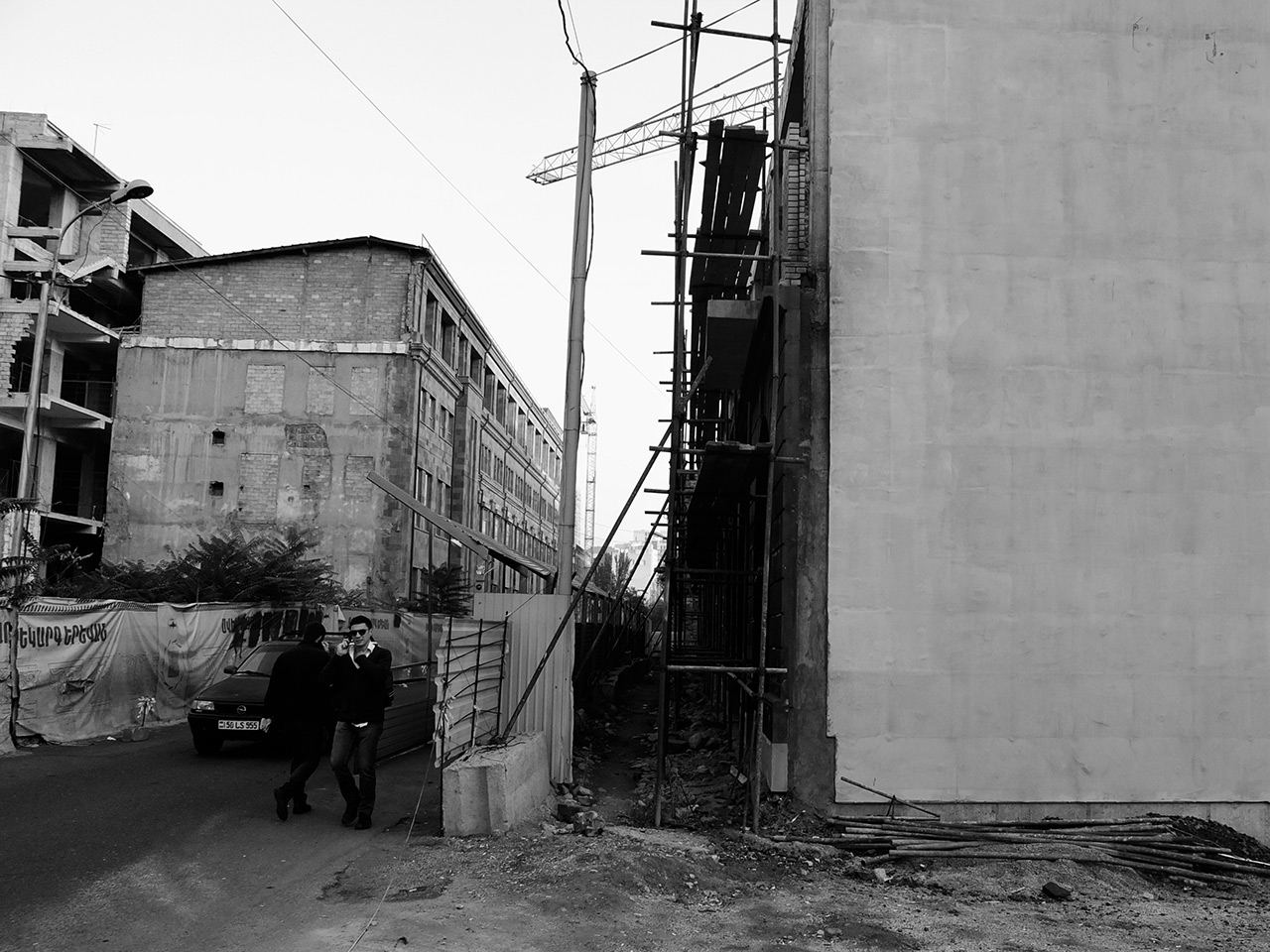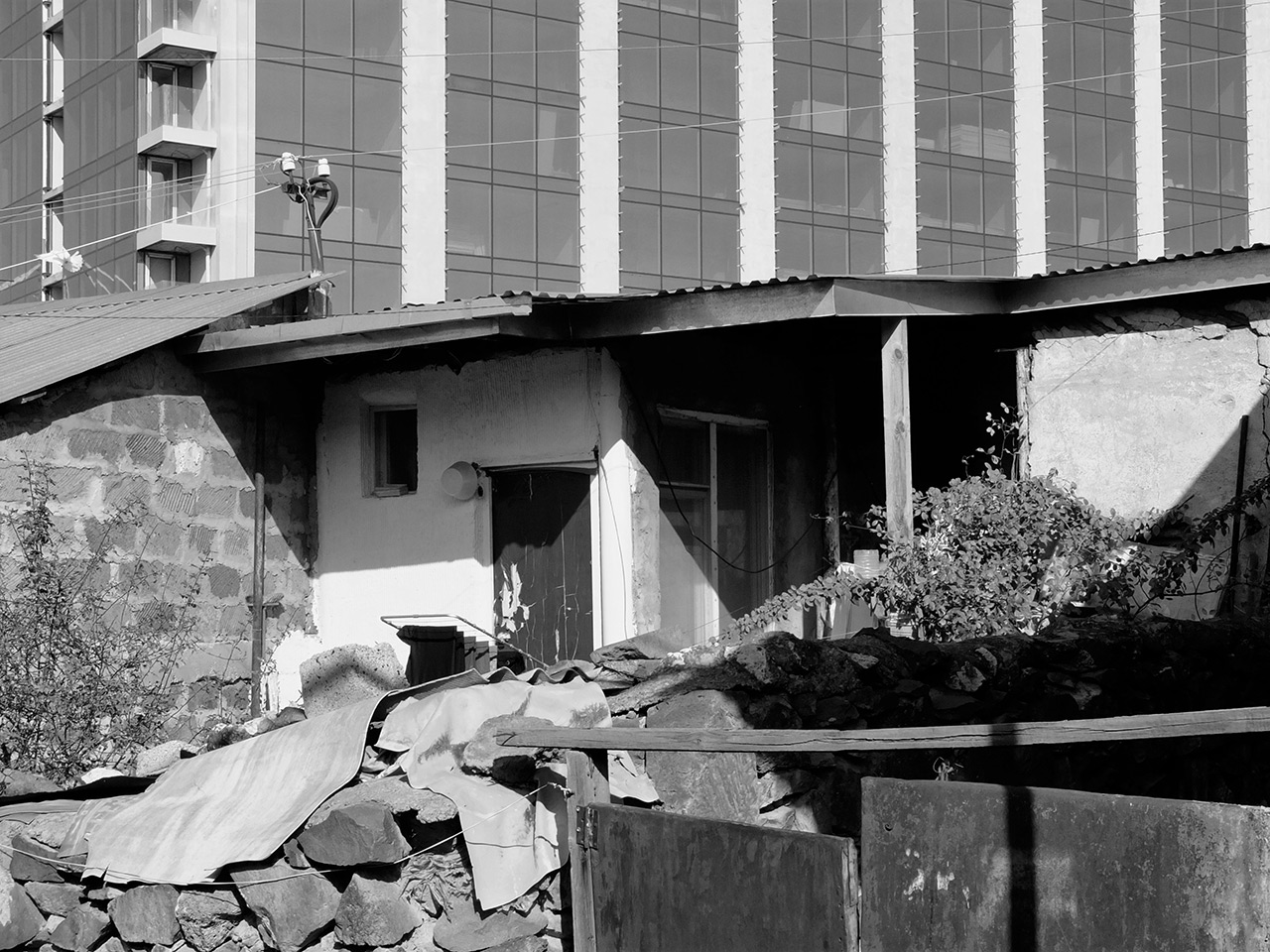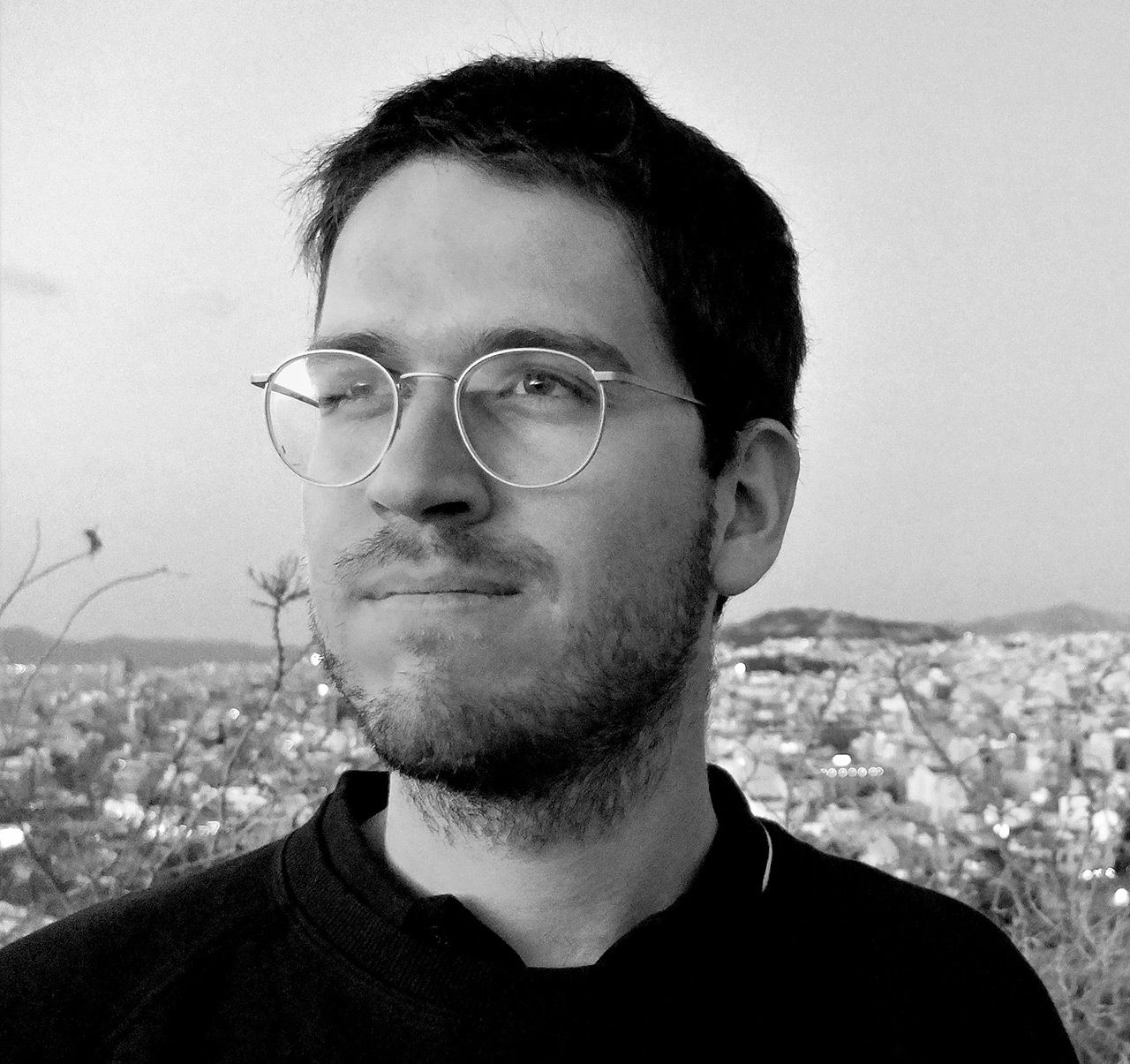by Jonas Bickelmann
Yerevan’s urban fabric might not be older than a century – but it tells a tale. It is a tale about the conflict between civil society and commercialization, and the ways of dealing with the city’s Soviet past.
Take, for instance, Yerevan’s Yeritasardakan (“Youth”) metro station, which looks like an elegant spaceship start ramp. Green areas have been filled with kiosks, a public underpass is now a cluttered shopping mall. Yerevan’s modernist treasures are under threat – many lost already.

Yeritasardakan metro station looks like an elegant spaceship start ramp, photo: Jonas Bickelmann
Sarhat Petrosyan is one of the people trying to save the heritage. Architect by profession and once activist, he was appointed as head of the State Committee of Real Estate Cadastre after the “Velvet Revolution” of 2018. However, he has recently resigned from this post to pursue his aims as the activist he was before. He feels that the centralised urban planning in Armenia needs that external pressure from the civil society. “There is no inclusiveness in the process,” Petrosyan says.
The view of the capital from Petrosyan’s office on the 16th floor of a 1970s Soviet era high-rise is fantastic. Yerevan’s structure is still strongly influenced by the plans of Alexander Tamanyan, who projected it as a neo-classical garden city in the 1920s. He designed two central squares, one for the Opera House, one for government buildings. A ring of parks surrounds the centre, though it never became the full circle Tamanyan had in mind. Some Armenians like to say that Yerevan was no more than a village before Tamanyan reinvented it as a Socialist city.
Icons of 60s modernism
The neo-classical splendour is still visible throughout Yerevan. But the city also offers numerous examples of the futuristic concrete modernism built after Stalin’s death.
Surprisingly, modernist architecture from the former Eastern Bloc has risen to online fame in recent years. Instagram accounts like @brutalistbeton and @socialistmodernism have hundreds of thousands of followers. How did an architectural style that others regard as off-putting and bleak become so popular?
Petrosyan is not surprised: “The modernist heritage of the west is well known. There is something exotic in Soviet modernism.”
Ruben Arevshatyan has a role in the popularity of Soviet modernism too. The artist started researching this modernist architecture in the early 2000s. “It was really out of focus at that time”, he recalls. Arevshatyan is very worried about the transformation of public open areas into commercial space. He is the son of two architects active in Soviet times. “My parents designed these stairs”, Arevshatyan says while we are passing the elegantly curved walkway leading to the American University of Armenia.
Privatized public spaces

Komitas Chamber Music Hall is one of Ruben Arevshatyan’s favourites, photo: Jonas Bickelmann
Another favourite of Arevshatyan’s is Komitas Chamber Music Hall, built of the Armenian yellow tuff stone omnipresent in Yerevan. Despite the traditional material, it has the same retro future feel to it as Yeritasardakan station and so many other modernist structures in the Armenian capital. And it tells the same story: the surroundings have been privatized and altered. A newly added wooden terrace surrounds the vast fountain pool next to the building, strangely interrupting the structure of the square. The space is only open to those who are willing to buy something at the café it belongs to.
Soviet modernism is still considered as a belated or secondary modernism. “It was not seen as heritage at all, but rather something that should be forgotten as soon as possible,” Arevshatyan remembers the common perception 20 years ago.
Reconstructing history
Much of Yerevan’s modernism disappeared in those days. Yerevan Youth Palace, a high-rise fit to serve as a science fiction vacation resort was taken down in 2004. And Central Yerevan partly feels like a construction site. Historic buildings have been demolished – to make room for a reconstructed version of history.

Construction site in the center of Yerevan, photo: Jonas Bickelmann
There is, for example, the Northern Avenue with its high, chunky buildings that house international luxury retail, an upscale, open air shopping mall in the centre of Yerevan. And there is the “Old Quarter” project on the central Buzand Street.
Petrosyan remembers these areas before their redevelopment. “They destroyed these very nice 18th and 19th century residential buildings, 30 monument sites.”
Arevshatyan sees these projects linked to what he calls the core of 20th century modern history – creating new history. “The repetitive erasure was taking place within the whole century, embracing part of the modernist movement,” Arevshatyan says. “Negation of history was part of the game. This is one of the paradoxical continuations of the same logic.”
It is indeed paradoxical: destroying historic buildings to re-construct a past that never was. This time, as a shopping mall.
Fighting displacement
And there is the social side of it: these developments used to be residential areas. Former inhabitants had to leave their property when ground was broken for the new quarters. They did receive financial compensation, though many claim it was far too low.
On one case of expropriation from the early 2000s, the European Court of Human Rights ruled this summer that the Republic of Armenia has to pay 1,6 million Euros to the former owner of a house expropriated for redevelopment. This is just the most spectacular of several similar cases brought to the European Court.

Kond quarter partly dates back to the Persian period in the 16th and 17th centuries, photo: Jonas Bickelmann
On a hill just around the corner from the Northern Avenue and the re-imagined “Old Quarter” lies a very different Yerevan: Kond quarter consists of narrow winding streets with small, residential buildings. Grape vine grows in the courtyards, and cats are enjoying the sunny November day. It is surrounded by construction sites too. Its future is uncertain.
“Kond dated from the Persian period in the 16th and 17th centuries,” says Petrosyan. He hopes that activism can save Kond from erasure. “Now we have reached a common understanding that the quarter is valuable and should be preserved.”
And Arevshatyan’s research into modernism comes to fruition too. The common perception of its value is changing. After the Velvet Revolution, seven modernist buildings were included in preservation efforts, he says. “That was a political gesture. Yes, we accept it.”
 Jonas Bickelmann studied philosophy. He now works for the Berlin daily paper Der Tagesspiegel. His research interests include globalisation, culture and economy – and the question on how they are intertwined.
Jonas Bickelmann studied philosophy. He now works for the Berlin daily paper Der Tagesspiegel. His research interests include globalisation, culture and economy – and the question on how they are intertwined.

